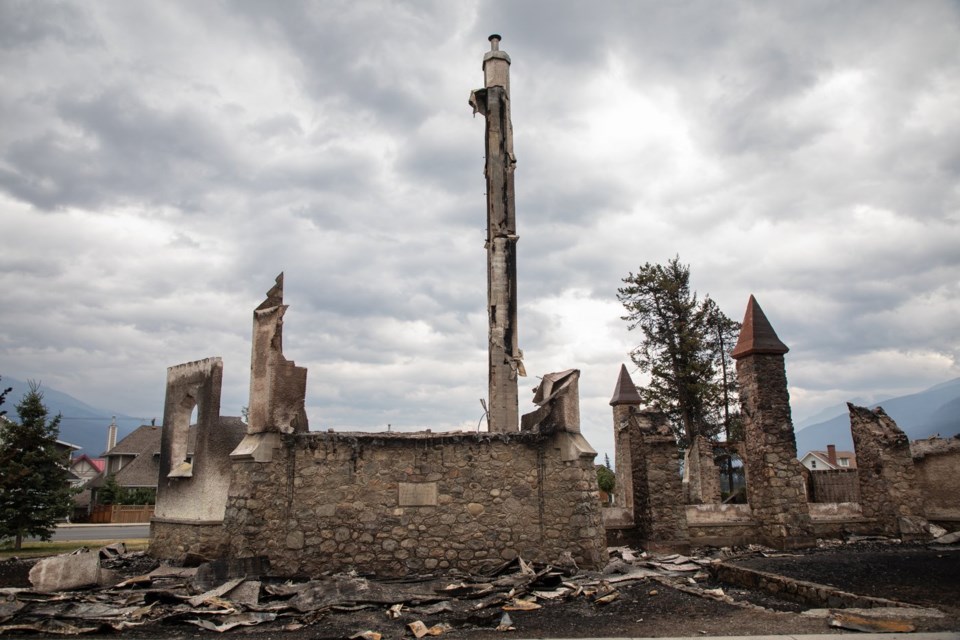JASPER, ALBERTA, CANADA — More than three weeks after everyone in Jasper had to flee raging wildfires through a curtain of darkness and smoke, some returned Friday morning, greeted by soot-covered tree stumps, Mounties, and long lines of orange traffic cones.
"Welcome Back" was written on a banner at the RCMP checkpoint into the Rocky Mountain tourist town.
Residents came in a sporadic line of cars, trucks and recreational vehicles. One pickup had a refrigerator in its bed. They moved along the main highway through Jasper National Park to the point where it branches off to the east side of the town.
There, police used pylons to divide the two-lane highway into three. Residents were being advised by officers patrolling the road to use the right lane to enter the town while those passing through were told to stay in the middle and keep driving.
The sky was partially cloudy and the air thick with the smell of smoke. Those driving in from the east could see swaths of trees burned to black skeleton stick branches alongside patches of green grass.
Only those who live in the community were being allowed to return. Park and town officials said they want to give residents time and privacy to assess the damage to homes and businesses before visitors return. No time has been set for full access to the community.
The return comes 25 days after wildfires cut road access and forced the town’s 5,000 residents, along with about 20,000 park visitors, to flee west into British Columbia on the night of July 22.
Two days later, the fire overwhelmed crews and hit the town, destroying 358 buildings, most of them businesses and homes, leaving the remaining two-thirds of the town either untouched or damaged by smoke, soot and water.
Key infrastructure, including water treatment plants and schools, were spared, but a lot of work remains.
School officials are scrambling to repair smoke-damaged schools ahead of the return to classes in September.
While residents can come back, they have also been told to be ready to leave again with one hour’s notice.
The fire menacing the community remains out of control at 330 square kilometres. It has been contained to the point northwest of town that it’s safe enough for residents to return.
More than 600 people and 12 helicopters are fighting the fires. Crews were conducting strategic burns as necessary to rob the fire of fuel like trees, shrubs and grasses. Elsewhere, they’re laying hose lines, cutting out crude landing pads for helicopters, tamping out hot spots and extinguishing ash pits.
This report by The Canadian Press was first published Aug. 16, 2024.
Fakiha Baig and Jack Farrell, The Canadian Press




